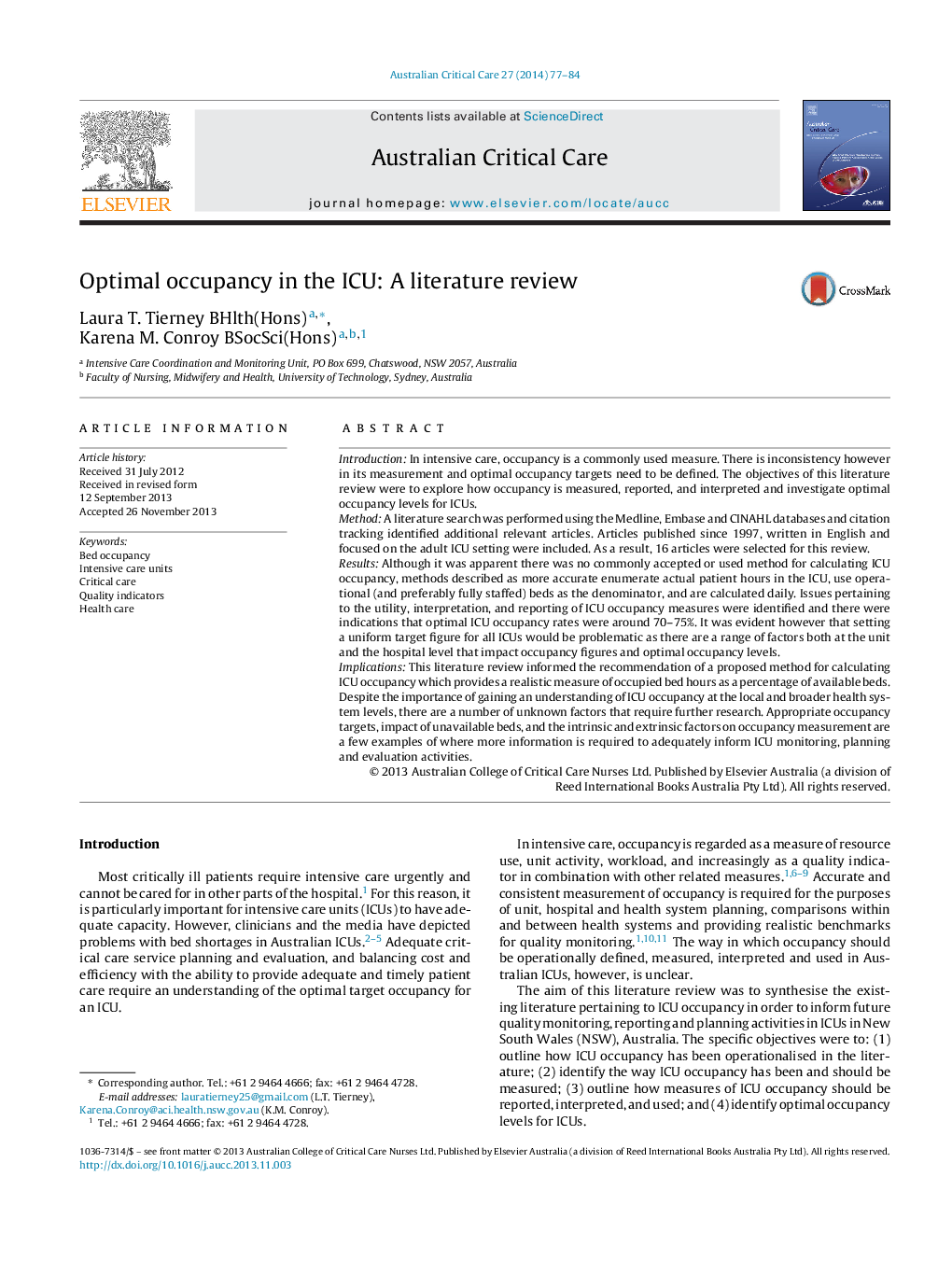| Article ID | Journal | Published Year | Pages | File Type |
|---|---|---|---|---|
| 2607265 | Australian Critical Care | 2014 | 8 Pages |
IntroductionIn intensive care, occupancy is a commonly used measure. There is inconsistency however in its measurement and optimal occupancy targets need to be defined. The objectives of this literature review were to explore how occupancy is measured, reported, and interpreted and investigate optimal occupancy levels for ICUs.MethodA literature search was performed using the Medline, Embase and CINAHL databases and citation tracking identified additional relevant articles. Articles published since 1997, written in English and focused on the adult ICU setting were included. As a result, 16 articles were selected for this review.ResultsAlthough it was apparent there was no commonly accepted or used method for calculating ICU occupancy, methods described as more accurate enumerate actual patient hours in the ICU, use operational (and preferably fully staffed) beds as the denominator, and are calculated daily. Issues pertaining to the utility, interpretation, and reporting of ICU occupancy measures were identified and there were indications that optimal ICU occupancy rates were around 70–75%. It was evident however that setting a uniform target figure for all ICUs would be problematic as there are a range of factors both at the unit and the hospital level that impact occupancy figures and optimal occupancy levels.ImplicationsThis literature review informed the recommendation of a proposed method for calculating ICU occupancy which provides a realistic measure of occupied bed hours as a percentage of available beds. Despite the importance of gaining an understanding of ICU occupancy at the local and broader health system levels, there are a number of unknown factors that require further research. Appropriate occupancy targets, impact of unavailable beds, and the intrinsic and extrinsic factors on occupancy measurement are a few examples of where more information is required to adequately inform ICU monitoring, planning and evaluation activities.
